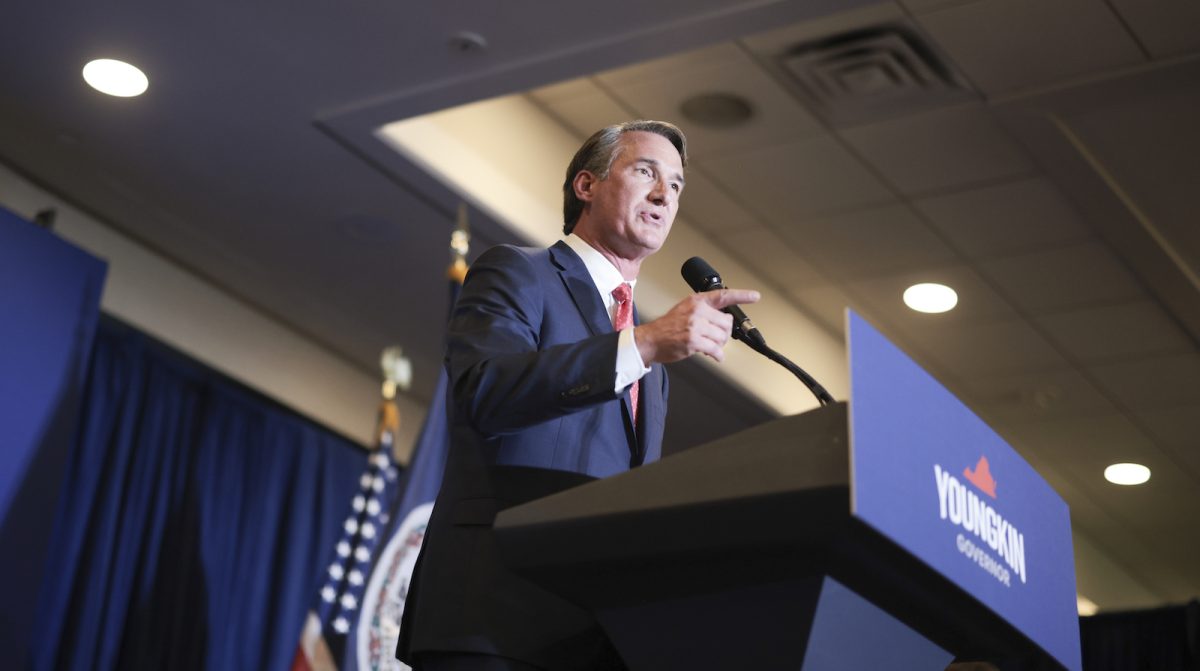Last year, during the height of summer temperatures and under the eye of a Democratic governor, Virginia became the latest state to join a program to cut greenhouse gas emissions from coal, gas, and other power plants.
Now, however, Republican Governor-elect Glenn Youngkin has vowed to yank Virginia out of the agreement by executive action, arguing that the program — known as the Regional Greenhouse Gas Initiative, or RGGI — costs the state too much money.
“RGGI describes itself as a regional market for carbon,” Youngkin said during a speech to the Hampton Roads Chamber of Commerce on Wednesday. “It is really a carbon tax that is fully passed on to ratepayers.”
The cap-and-trade program was established in 2005, and currently includes 11 states in the Northeast and Mid-Atlantic, including New York, Vermont, and Massachusetts. According to a report from the nonprofit Acadia Center, power plant emissions in RGGI states dropped by 47 percent between 2009 and 2019, far outpacing the rest of the country. Although it’s hard to identify exactly how much of the impact came from the program itself, one study has estimated that about half of the emissions reductions were attributable to RGGI.
But policies that put a price on emitting carbon dioxide — such as cap-and-trade programs and carbon taxes — have been controversial. At the state level, they have become targets for critics on the right, who argue that they’re too expensive. Youngkin’s transition office claimed that pulling out of RGGI would save average residents $52.44 a year on electricity bills.
“I’m not surprised” by the governor-elect’s statement, said Lee Francis, the deputy director of the League of Conservation Voters. “We’ve been poised to defend our climate progress since Election Day.”
Environmental groups argue that the benefits far outweigh the costs. The RGGI program auctions off allowances to pollute, and the proceeds are returned proportionally to the states. Since joining the coalition, Virginia has received $228 million in proceeds, far outstripping the state’s projections. About 50 percent of that money has been allocated to energy-efficiency programs for the state’s low-income residents; another 45 percent flows to a community flood preparedness fund to help the state brace for sea-level rise.
“He made this announcement in Hampton Roads, in front of a roomful of people who were lucky to get there because the streets weren’t flooded that day,” said Francis. “It’s dripping with irony across the board.” According to the Southern Environmental Law Center, the Hampton Roads area has one of the highest rates of sea-level rise on the entire East coast.
Experts were quick to note that Youngkin does not have the authority to unilaterally pull Virginia out of RGGI, because the state’s participation is regulated by Virginia’s air pollution control board. “Amending or withdrawing those regulations, which are on the books, is not something that’s done by executive action,” said Cale Jaffe, a professor of law at the University of Virginia.
That board is currently filled with members appointed by the previous governor, Democrat Ralph Northam. According to Jaffe and Francis, there won’t be another opening on the board until next summer. And Democrats still narrowly control the state senate, which helped to pass a landmark bill last year that committed Virginia to producing zero-carbon electricity by 2050 and confirmed the state’s participation in RGGI.
Francis says that Youngkin’s attempt to pull the state out of the cap-and-trade program is unconstitutional. “Our message to Governor Youngkin is that the governor’s office doesn’t come with a magic wand,” he said.




